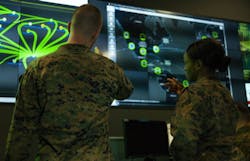What can military cyber security experts learn from more than a decade of international cyber attacks?
LONDON – The 2000s saw the first of many global cyber attacks with the release of ILOVEYOU, a computer worm that infected millions of computers around the world in an effort to steal passwords and allow its creator to access the Internet for free. Wavell Room reports. Continue reading original article
The Military & Aerospace Electronics take:
5 Oct. 2020 -- Over the next 10 years newspapers reported China’s infiltration of U.S. and United Kingdom defense networks, Russian attacks on Estonia and Georgia, and North Korean denial of service attacks on South Korea and the U.S.
However, it wasn’t until the 2010s when offensive cyber operations really burst into the mainstream. This article reviews offensive cyber operations over the past decade and identifies thematic objectives: it identifies case studies for each and considers what the military can learn from them.
While each of the case studies has their own lessons learned, each share a key theme: they demonstrate that cyberspace is a key element of the battlespace, and effects launched from, or occurring within, cyberspace easily have an impact outside of it.
Related: Military cyber security: threats and solutions
Related: Cyber security and encryption for the masses
Related: GA-ASI demonstrates Predator B electronic attack capabilities
John Keller, chief editor
Military & Aerospace Electronics
